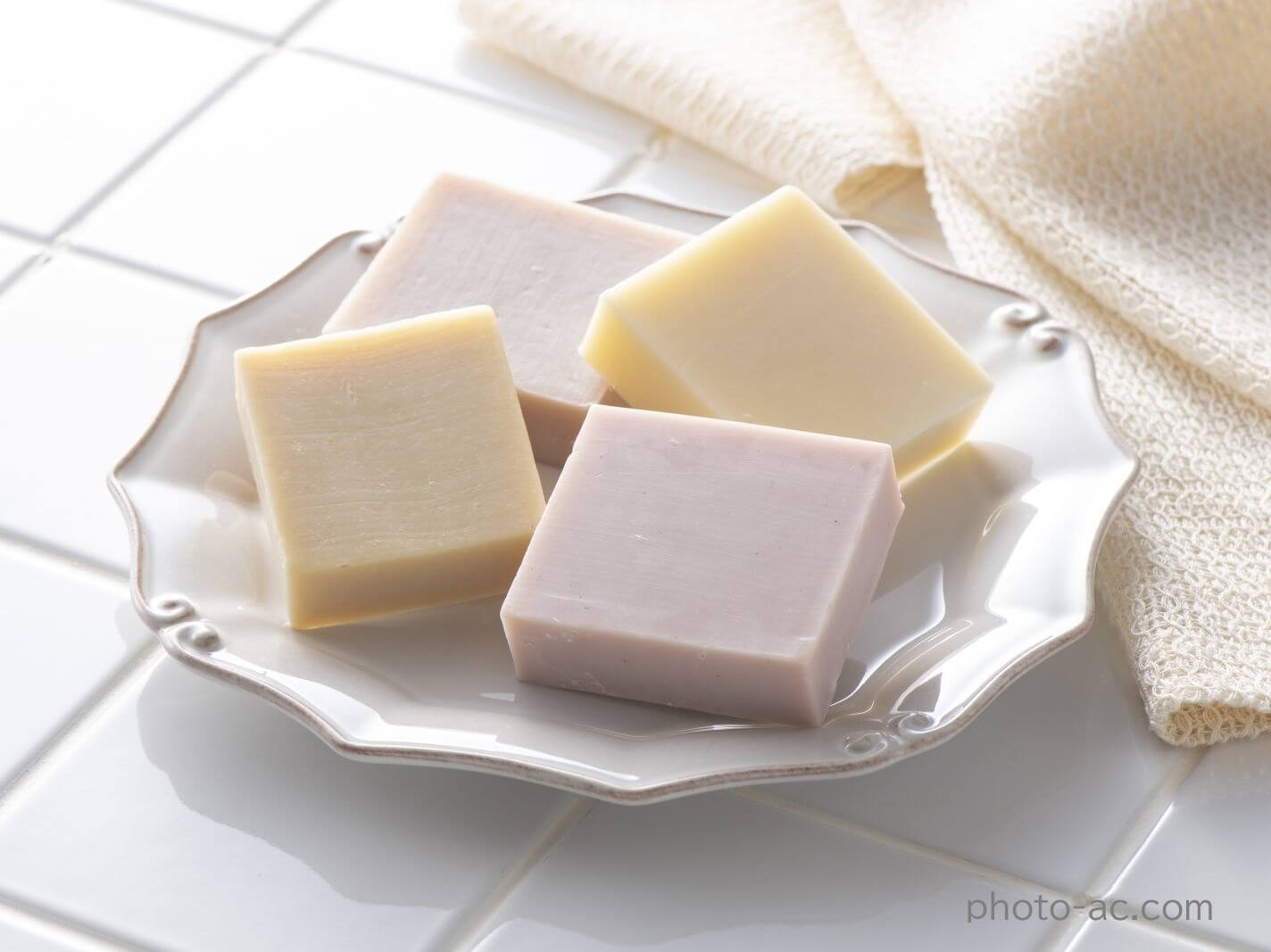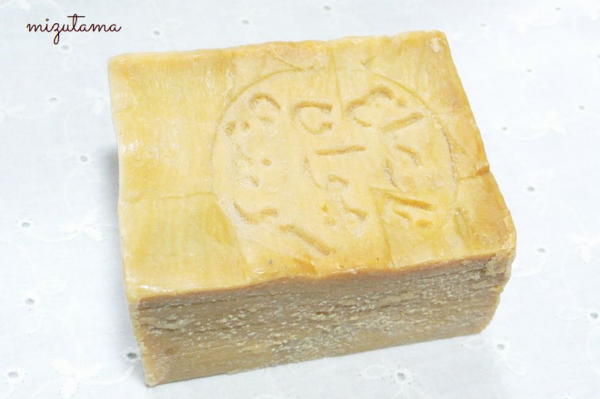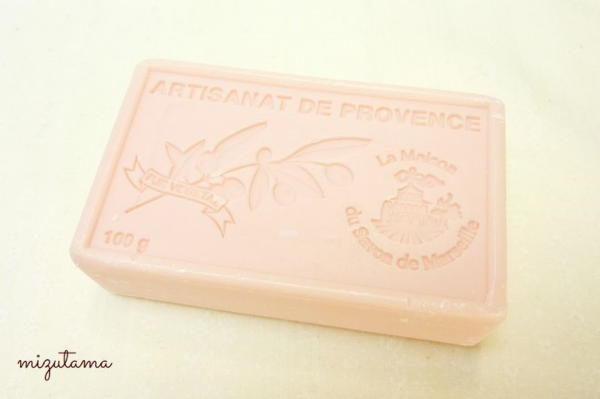About handmade soaps
Overview

Generally, handmade soap (such as cold process soap) is pretty dry and hard. Freshly made soap is left to dry well because moist soap will not last and it takes about 6 weeks for saponification to complete. No lye(sodium hydroxide) will remain in the soap.
Despite these difficulties, I like handmade soap. I just have to soften it to carve.
Soap types

Aleppo soap is made with 100% natural ingredients. This contains a lot of glycerin, so it is hard to break.
I wrapped the Aleppo soap in a wet dish cloth and warm it up in a microwave.
See this page for instructions on how to prepare an Aleppo soap for carving.

Savon de Marseille is a traditional French soap made from 100% natural ingredients.
I wrapped the Marseille soap in a wet dish cloth and plastic food wrap, then left it for a week. Unfortunately, the Marseille soap became too soft. It's better not to left the soap in a wet cloth for many days.